Between the cold weather and snow, winter can be harsh on your lawn. Knowing how to help it bounce back in the spring is a labor of love, but it’s well worth the effort. In this guide, you’ll learn everything there is to know about reviving your lawn after the winter snow melts.
What Is Lawn Revival after Winter?
Spring lawn revival involves a process of restoration tasks to help bring your lawn out of its dormancy. After months of frost and snow, your lawn is likely to need some serious TLC to return to its former glory.
Winter damage and stress affect lawns throughout the United States, ranging from fallen leaves to blankets of thick snow and ice. Once the winter has passed, your lawn is just as ready as you are for spring.
Why Caring for Your Lawn After Winter Is Important
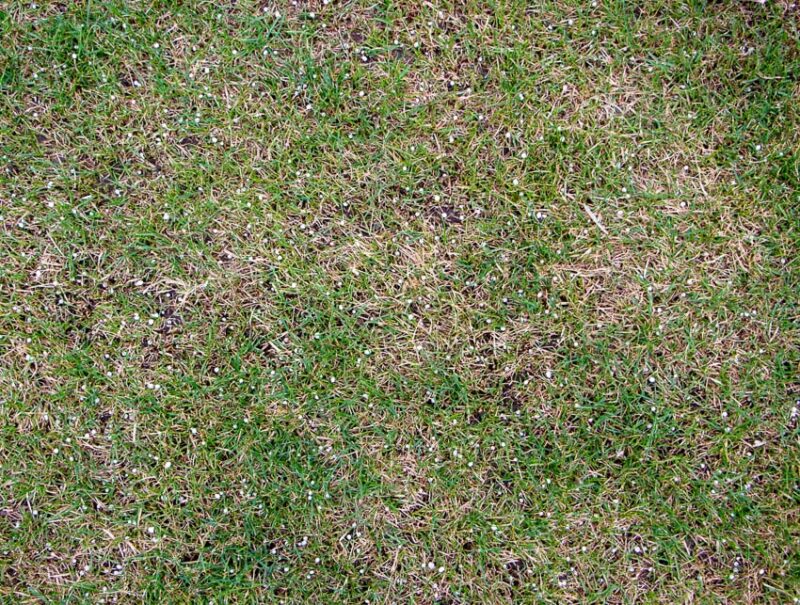
Winter is tough on your grass. Snow and ice can create a dead-looking, patchy lawn that can ruin your home’s curb appeal. Not to mention, fungal diseases and mold can affect your lawn’s health, which is why it’s important to bring it back to life as soon as winter is over.
Winter Stress
Cold and dry conditions are a major source of winter stress for your lawn. With the absence of snow on the ground, an especially harsh cold snap could suck all of the moisture out of your grass, potentially freezing its roots.
However, cold and wet conditions can be just as hard on your lawn. Even if there is water on your yard’s surface, there could be a layer of frost below the surface that prevents soil drainage, limiting the absorption of essential nutrients or oxygen.
Snow Mold and Fungal Issues
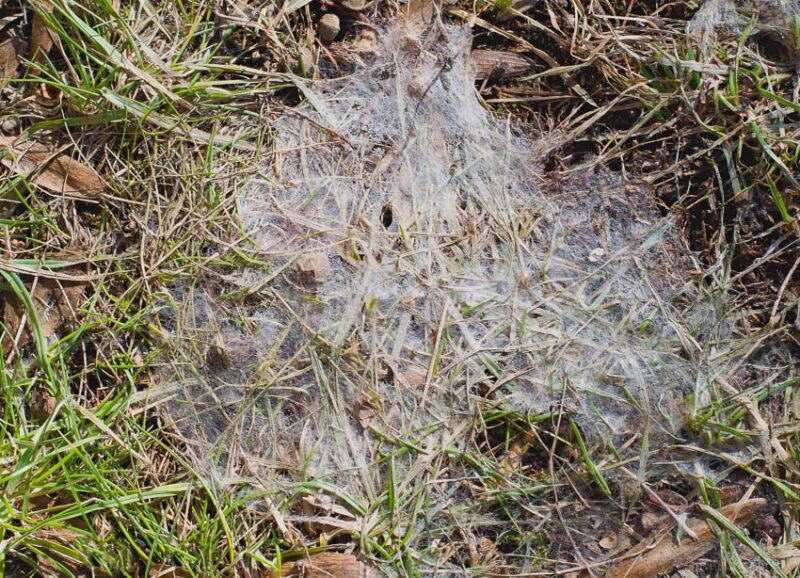
Another danger to your lawn during winter is snow mold. This fungus is active during cold weather and usually affects cool-season lawns in northern regions where heavy snow can commonly sit on your grass for weeks or months.
There are two types of snow mold: Fusarium patch (Microdochium nivale), which is pink, and Typhula blight (Typhula incarnata), which is grey. Both types are common, and your lawn will outgrow them with plenty of air, sunshine, and fertilizer.
Soil Compaction
Winter precipitation like rain and snowfall can lead to soil compaction, which is another factor that’s tough on your lawn. With compacted soil, water won’t drain, which can often lead to fungal diseases in your lawn. The wet conditions can also make it more difficult for the roots of your grass to absorb important nutrients.
Wet soils are more susceptible to compactions, so it’s important to wait until your lawn dries out a bit before you start mowing your lawn in the spring. Heavy foot traffic patterns can also lead to compacted areas where grass has more difficulty growing, so it’s best to avoid them if possible.
Early Spring Growth
In the fall, grass stores nutrients in its root system to sustain itself through the winter months, with just enough reserves to begin its spring growing cycle.
Sometimes in early spring, your grass could start growing prematurely during a warm period. When another sudden cold snap comes along, it can knock back growth progress. Losing the majority of its nutrients during the early spring could weaken it even more.
Aesthetic Appeal
It can be a bit of a shock to discover what a mess your lawn is once the snow melts. You may find pieces of garbage, pet messes, and dead leaves everywhere, which can be somewhat embarrassing. You may even see evidence of wild animals taking shelter under your lawn, such as gopher mounds or mole tunnels.
Long-Term Lawn Health
Your lawn’s long-term health is often determined by the kind of start it gets in the spring. Any setback can take your lawn weeks or even months to recover.
When your lawn is weakened, it’s also more susceptible to pests and diseases. Fungal diseases can lead to weeds and bare, patchy spots. Before too long, your once beautiful lawn is now full of crabgrass, clover, and dandelions.
When to Start Reviving a Lawn After Winter
As soon as winter comes to an end, many people are already itching to start their spring lawn care routines. Although it sometimes starts to get warmer in February, that may be too early to start revitalizing your lawn completely.
Geographic Considerations and Soil Temperatures
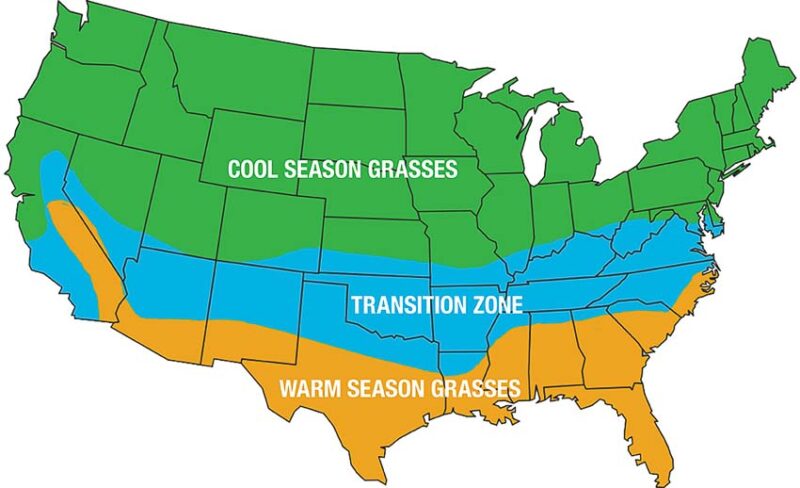
There’s a big difference between February here in Florida and February in Philadelphia. Northern regions will have to wait longer for spring weather to come whether or not the groundhog sees its shadow.
Northern Regions
In northern regions, spring lawn care routines should wait until the soil is ready. That means you should measure your soil’s temperature at around four inches deep.
Once the soil reaches 50°F to 55°F (10°C to 13°C), you can safely start lawn care practices like mowing your lawn. The more north you are, the longer you will have to wait to start. In Nebraska, for example, soil usually doesn’t start reaching optimal temperatures until mid-April.
Southern Regions
The closer you are to the equator, the earlier spring will come each year. If you want to avoid manually measuring soil temperatures, you can sign up for alerts from an online soil temperature app for your region. It will tell you when the ground in your area has reached the right temperature to start revitalizing your lawn.
Grass Growth Signs
Your grass’s length can be another indicator that it’s time to start mowing. When the blades of your grass are about two or three inches tall, you can safely start taking care of mowing and trimming tasks. You don’t want to mow too early, since cutting back the first delicate new shoots can weaken your lawn, leaving it prone to diseases.
Local Recommendations
Your local extension office can give you recommendations about when you should start spring lawn care in your area. Other resources include social media groups, such as a local Facebook gardening group.
Early Spring Maintenance
Some people are raring to start lawn care after winter as soon as the snow melts. In most cases, it’s best to start by taking care of the big messes first. You should rake your yard and clean off sidewalks, driveways, and patios, and you’ll start feeling like fertilizing your lawn can be put on the backburner for a little while.
Tips for How to Revive a Lawn After Winter
Once your soil reaches that ideal temperature of 50 to 55°F, you can finally start your spring revitalization full steam ahead.
Step 1: Assess Your Lawn
The first thing you should to to revive your lawn after winter is asses the condition of your soil and grass. Make the following observations:
- Probe your soil to test for compaction.
- Test the soil temperature, pH, and moisture level.
- Look for pest damage.
- Test the thatch thickness.
- Note the presence of weeds.
Step 2: Clear Debris and Dead Material
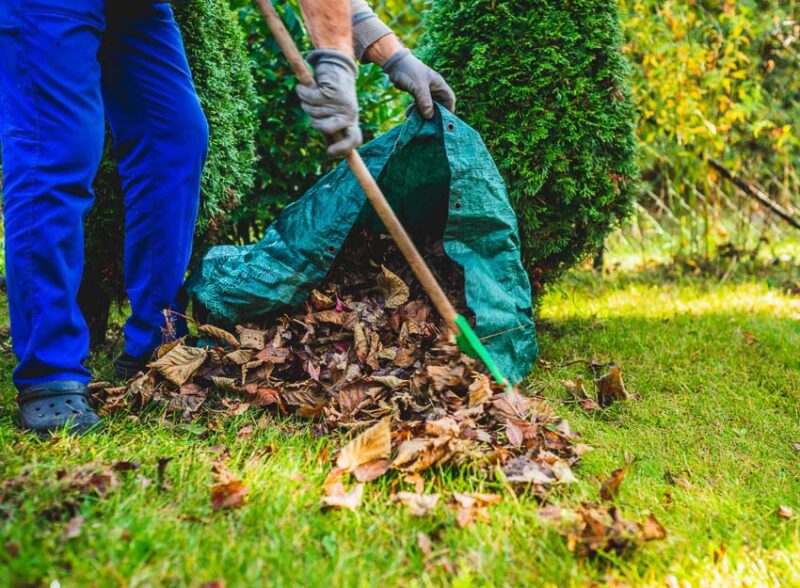
The next thing you should do is thoroughly rake your lawn, removing dead leaves, sticks, and other debris that fell on your yard during the winter.
Raking your lawn will help remove some of the thatch, allowing your grass to breathe and drain more effectively. It will also address unsightly lines in your lawn caused by voles.
Additionally, pay attention to any bare spots you see in your yard and make a mental note to reseed them.
Step 3: Aerate the Soil

Most lawns should be aerated every one to two years. Heavy clay soils are more prone to compaction, so if you have this type of soil, so may notice a significant difference in your lawn’s health if you make aeration a regular part of your routine.
It’s common to hire a professional for lawn aeration, but if you have the right tools you can do it yourself. Most DIYers use spike aerators because they’re more affordable. However, if you’re serious about lawn maintenance, take the plunge and splurge on a core aerator for more effective aeration.
Step 4: Choose the Right Fertilizer

If you don’t have a fertilizer schedule for your lawn, now is the time to start including one in your spring routine. Fertilizing in the spring helps your grass grow quickly and ensures a lush, green coat.
Some of the best fertilizers for grass after winter to boost early growth include:
| Early spring lawn fertilizer | NPK ratio | Type |
| Greenview Fairway Formula Weed and Feed and Crabgrass Preventer | 24-0-6 | Weed and feed granules |
| Espoma Spring Lawn Booster | 8-0-0 | Organic granules |
| Milorganite Slow-Release Nitrogen Lawn Fertilizer | 6-4-0 | Slow-release granules |
Step 5: Overseed If Necessary
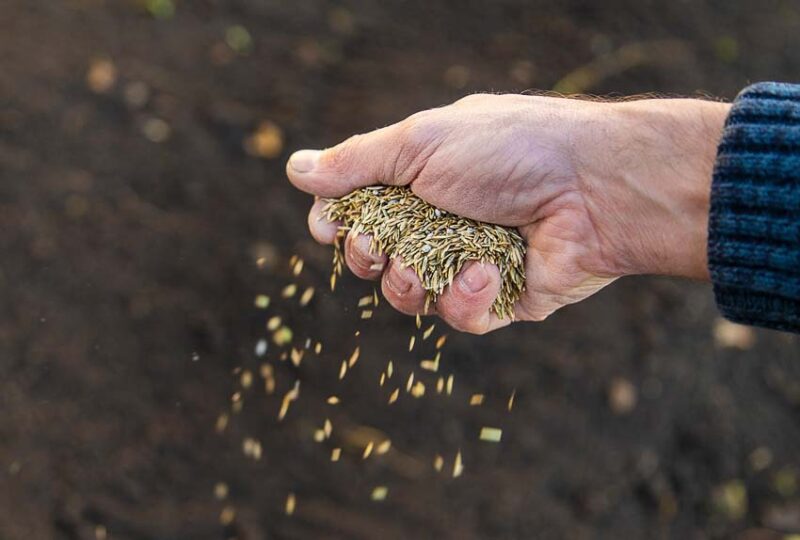
Spring is the best time of year to plant new grass seeds, regardless of your region. If there are bare spots in your lawn after winter, you should overseed for a healthier, fuller lawn throughout spring and the rest of the year.
It’s a good idea to aerate your lawn before you overseed, but make sure to wait until soil temps are at 60°F (16°C) or above. Once you overseed your lawn, rake it to smooth it out, and then reapply the seed with a broadcast spreader.
Step 6: Watering and Irrigation
As soon as you start mowing in the spring, you should start watering as well. A winning ticket to a healthy lawn includes sunlight, fertilizer, and water.
A rain gauge can help you make sure you’re not overwatering. A good benchmark is to aim for about one inch of water per week, spread out into two or three waterings, including rain.
Step 7: Monitor and Adjust
Make sure to continuously monitor your lawn’s needs as the growing season progresses. Keep an eye out for weeds, keep your lawn mowed with sharp mower blades, and soon enough you’ll have the best-looking lawn on the street!
FAQs about How to Revive a Lawn After Winter
How do I know if my lawn is dead after winter?
Brown grass after winter is normal, and most grass looks dead after the snow melts. This is because grass goes dormant in the winter, and all you can see is the dry, brown blades of exposed grass. There is still life in the plant’s crown, though.
However, sometimes grass does die for a variety of reasons. An easy way to tell if it’s alive is to grab a handful. If it comes up easily from the ground, roots and all, it’s probably dead. If your grass is alive but dormant, you won’t be able to easily pull up the roots.
Can I skip aeration and still revive my lawn after winter?
Aeration isn’t a necessity first thing in the spring. You should ideally wait until soil temperatures warm up to around 60°F (16°C) to aerate your lawn, and it’s not necessary to do this every year. If you don’t have compaction-prone soil, every other year is often enough for aeration.
When is the best time to mow my lawn after winter?
You should wait until your soil temperatures reach 50°F to 55°F (10 to 13°C) before you mow your lawn in the spring. When that happens depends on your climate region. In more southern parts of the country, this can happen as early as February, but lawns in the north may have to wait until mid-April or later.
What should I do about lines in my grass after winter?
The likely cause for the lines in your grass that you see after the snow melts is vole tunnels. Voles are small burrowing creatures, similar to moles and gophers. They don’t hibernate and can cause problems for your lawn by running around between the ground and the snow.
The good news is that most of the damage caused by voles will be repaired by your lawn on its own. Plus, between raking and aerating, lines may even go away within a couple of weeks.
How long does it take to see results when reviving my lawn after winter?
Within two weeks after you start your revival schedule, you’ll have a whole new lawn. It may take a few weeks to notice new grass growth in bare spots where you reseeded, but after you fertilize, water, and mow your lawn, your home’s curb appeal will skyrocket.



